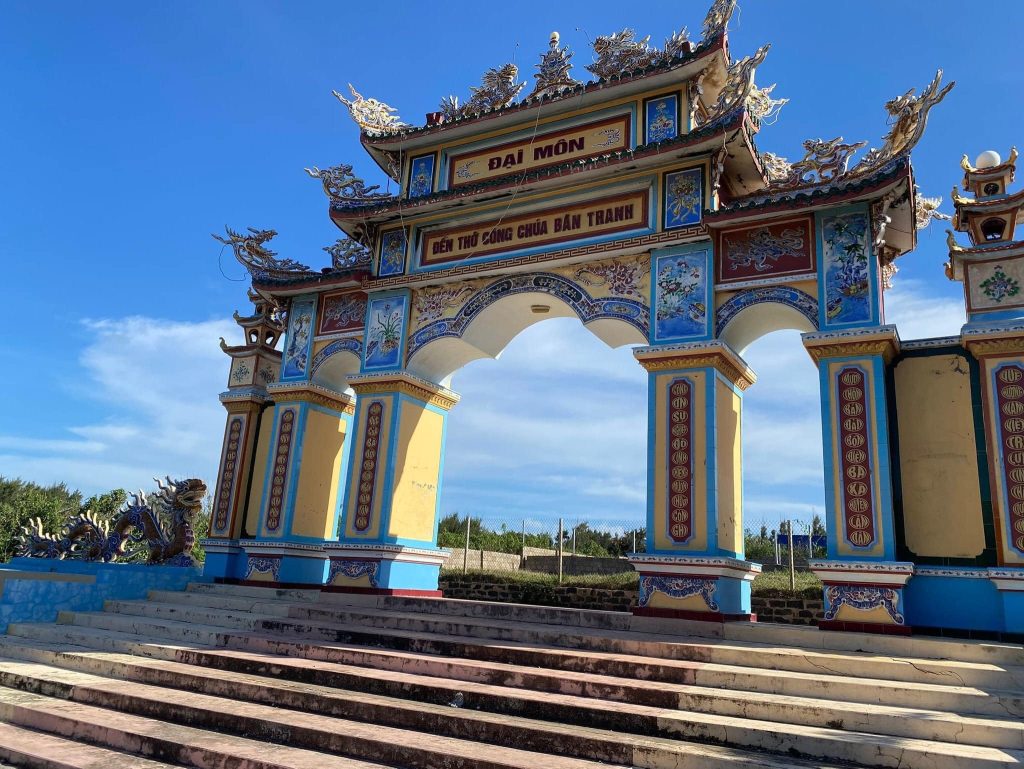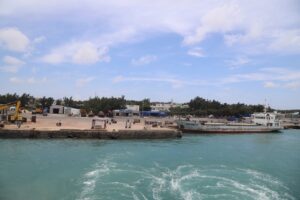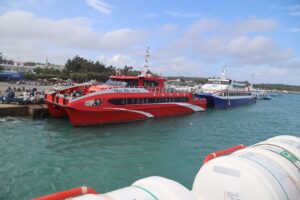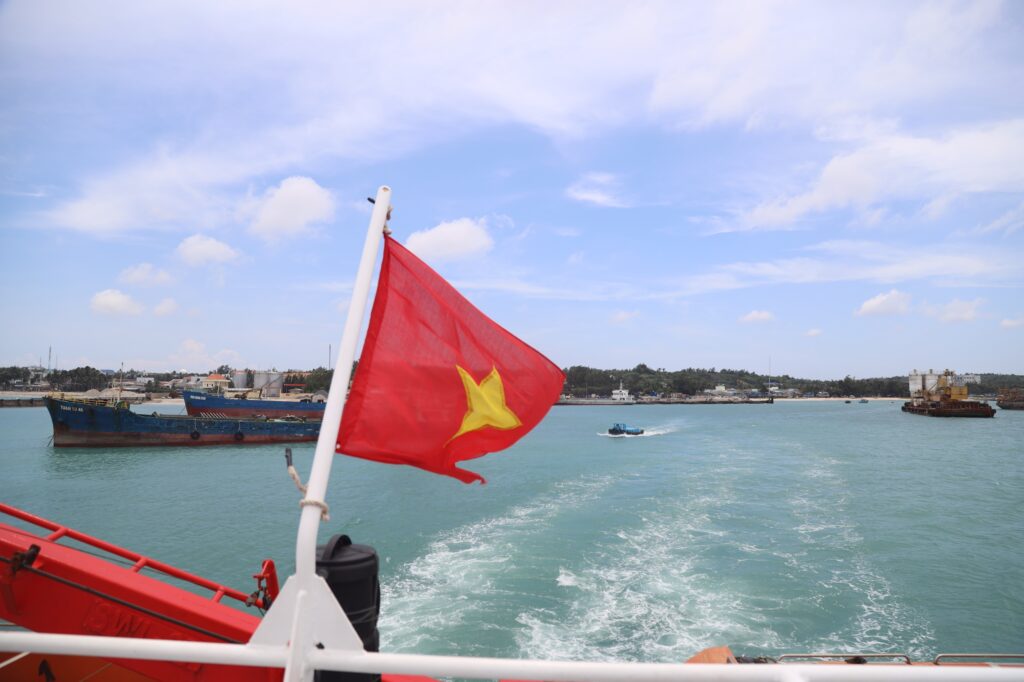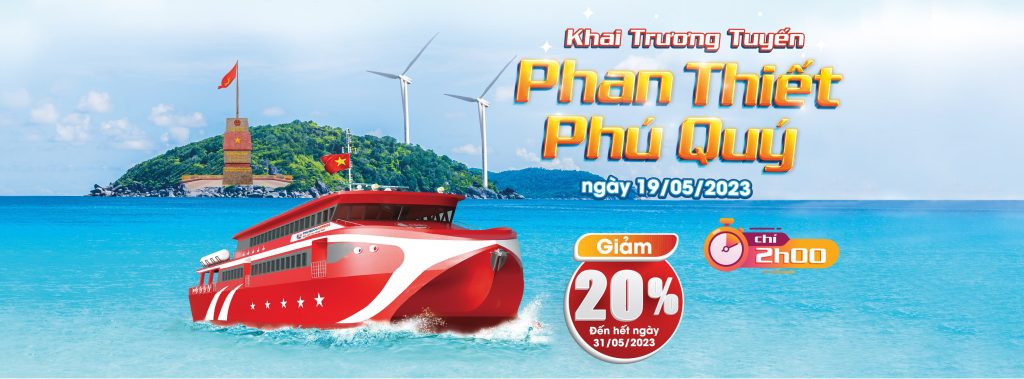Princess Ban Tranh Temple is located in Quy Hai village, Long Hai commune, about 4km northeast of People’s Committee of Phu Quy district and Phu Quy port. Princess Ban Tranh Temple was ranked provincial relics by the People’s Committee of Binh Thuan province in 2007. After that, the temple’s scientific file was upgraded to submit the Ministry of Culture, Sports and Tourism for national level relics ranking in 2015.
The temple was built by the Cham people in the late 15th century, according to legend has it that princess Ban Tranh of the Champa kingdom was exiled to the island due to commit a crime by her father when she was young, after her death she was buried here. Later, when the Kinh came to take over the island, they called it princess Ban Tranh temple. Due to her great merit as well as her holiness in protecting and helping the islanders, she was called by a respected name as Ba Chua Xu or Ba Chua Dao.
Princess Ban Tranh Temple shows the skillful inheritance, transformation and integration of the Kinh culture towards Cham traditional culture when taking over and building up life on Phu Quy island. In addition to inheriting and worshiping princess Ban Tranh, there are still legends about her until now; in mind and thinking, people on the island consider her a very miraculous god, always beside to protect and support people in their career and life. Over the past centuries, the Vietnamese in Phu Quy have continuously made contributions to restoration and embellishment, as well as worshiping and sacrificing solemnly according to their custom. The worship of Princess Ban Tranh has long been the most common and sacred belief of the islanders. Annual worship and sacrifice are held alternately between villages of 3 communes on the island (formerly 14 villages, later 9 villages), each village was kept the honours, worshiped and sacrificed for a year, after year it was rotated to another village.
Princess Ban Tranh Temple is located on a spacious and airy campus near the foot of Cao Cat mountain and is called Ba Chua field by the people on the island. The current temple architectural design no longer maintains the original structure as before, because the temple has been damaged and restored, embellished and repaired many times. The recently reconstructed temple has influential and solemn architectural structure and scale, including: the Great Hall, Vo Ca, Guest House, Fume House and Main Gate; In the foreground is a clean tiled courtyard that holds ceremonies and folk games on festivals. The main direction of the temple turns to the southwest.
The value of the architecture and the soul of the temple is concentrated in the Great Hall. The interior is decorated with 3 altars, the altar in the middle worships Princess Ban Tranh, two on the left, and right worship Tien Hien and Hau Hien. In the middle of the main altar, worships 3 stone Kut placed on the pedestal, the middle Kut is larger than the two sides. Instead of Cham people’s Kut with their own specific decorative and sculptural lines; but Kut here is the interference between sculpture and decoration of Vietnamese and sculpture and decoration of the Cham people. Among the Khut, there is an inscription of Han Nom characters like an ancestral tablet with the content: Invoquer the ancestral tablet of Ba Tranh king. In the Great Hall, two altars of Tien Hien and Hau Hien are also arranged, who have the merits of establishing, preserving and embellishing the temple ever since. In addition, at the temple also preserves some horizontal lacquered boards, the parallel sentences inscribed in Han Nom characters with the content praising the merits of Princess Ban Tranh and Tien Hien, Hau Hien.
Due to her great merit in the exploration and expansion of land on the island, princess Ban Tranh was awarded 8 ordinations by the Nguyen dynasty kings (of which there were 5 ordinations upon her, the remaining 3 ordinations awarded both princess Ban Tranh and Monk Sai Nai – the human god was venerated by islanders and they built temples to worship.
The ordinations are precious heritage, reflecting Vietnam’s territorial sovereignty on remote islands under the Nguyen Dynasty kings, this is an authentic historical document very useful in the process of researching the history of Phu Quy island.
Every year, a major festival is held at the temple, the Princess Ban Tranh Ceremony which took place on the 3rd of the first lunar month; because the time of the festival takes place right on the occasion of the Lunar New Year, it attracts almost all the people on the island to participate in the ceremony and enjoy the spring with the festival.
In addition, the festival of Monk Sai Nai takes place on the 4th of April of the lunar calendar, which is both the dead anniversary of Monk, and and also the day of transfering the ordinations of princess Ban Tranh and Monk Sai Nai from village to village. During the festival, after the ceremony of Monk Sai Nai at the temple ended; it’s the village’s turn to worship the ordinations , they must organize a group of ceremony to go to the Monk Sai Nai temple to receive and invite the ordinations to the temple of Princess Ban Tranh to worship and return to be seated and worship at a temple or a mausoleum of its village.
The festival takes place at of Princess Ban Tranh Temple every year, attracting a large number of local communities to participate with the respectful spirit and attitude and an indispensable support in the cultural and spiritual life from past to present of the islanders. The festival at Princess Ban Tranh Temple aroused good human values of the Vietnamese people, that is human behaviour of the posterity to memorize and appreciate the merits of seniors who have the merits of reclaiming the land and set up villages. For a long time, worshiping and sacrificing princess Ban Tranh was a common responsibility of the people of the villages on the island. This is a new, unique and discrete feature that is only found in Phu Quy Island, but rarely found in other places.
Tourists come to Princess Ban Tranh Temple, in addition to the ceremony, admire the architectural style bearing the imprint of cultural exchange between the Vietnamese and the Cham in history; listen to the stories, the miraculous stories about her, admire the magnificent natural landscapes of Cao Cat mountain from afar and then move it about more than 5 minutes to conquer this mountain top and worship Buddha at Linh Son Pagoda is located on the top of Cao Cat mountain.



